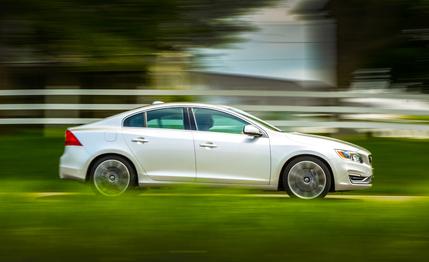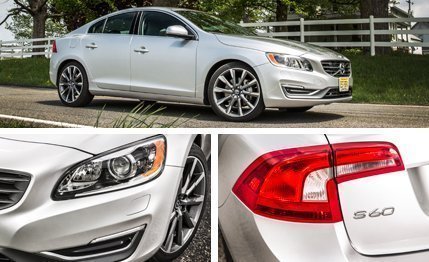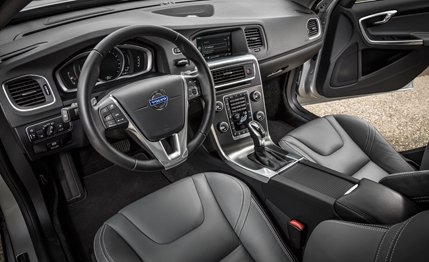
 Instrumented Test
Instrumented Test
We have a long and checkered history with the current-generation Volvo S60. First it lost to the Buick Regal GS in a head-to-head comparison test. Then, given a chance to redeem itself in a five-car sports-sedan comparo in which it was spotted a 60-hp advantage, it finished last. We signed on for a long-termer anyway, and the car wound up requiring a brain transplant to complete its 40,000-mile test. Now the S60 returns—this time with a new heart [see New Tech for 2015].
A 2.0-liter, direct-injected four-cylinder mated to an eight-speed transaxle with stop-start forms the basis of a goofy new appellation, “Drive-E.” (Note to Volvo: Put the internetty vowel before the word.) All future Volvos will be powered by these new fours, which, oddly, retain the T5 and T6 badges of their five- and six-cylinder predecessors. The base T5 Drive-E is turbocharged to 240 horsepower, while the T6 Drive-E is both turbocharged and supercharged to make 302 horses and 295 pound-feet of torque. That’s an impressive amount of power from two liters, but Volvo says even more is forthcoming, with hybridized versions capable of sitting in for V-8s.


We’d like to say that doubling the forced-induction adders transforms the S60. But the T6 Drive-E runs the quarter-mile in 14 seconds flat, the same as the last six-cylinder T6 AWD model we tested. The Drive-E’s zero-to-60 split is a tenth faster at 5.4 seconds, but the steering gets so light under full throttle that the advantage is as pyrrhic as it is small. The whining blower does improve transitional throttle response when revs are below 3500 rpm, though the eight-speed automatic has a greater impact in smoothing out power delivery. Paddle shifters are now standard.
Braking performance of the T6 Drive-E suffers thanks to a change in tire spec. Pirelli Cinturato P7 All Season tires replace the Continental ContiProContacts, and the stopping distance from 70 mph extends to 193 feet, 11 longer than before. Why are we so convinced it’s the tires? Because these Pirellis also undermine the braking capabilities of the BMW 3-series.
Of course, the impetus for all of this is fuel economy. And in the eyes of the EPA, Volvo succeeds. The T6 Drive-E is rated at a combined 28 mpg, 7 mpg more than our 2012 long-termer. Highway fuel economy is a lofty 35 mpg, impressive for any 300-hp vehicle.


While doubling down on forced induction can improve efficiency, it also gives heavy-booted drivers greater opportunities to burn fuel. To wit: Over 500 miles, we managed 24 mpg in the T6 Drive-E, 1 mpg less than we saw during our long-haul test with the six-cylinder model. Your mileage may vary, indeed.
The S60 got a new front end and a new instrument panel last year, but neither of these upgrades nor this new engine really moves the bar. And someone at Volvo must realize this, because for the time being, Volvo will sell the new Drive-E models alongside the old turbocharged five- and six-cylinder cars. We’re already on record regarding those.